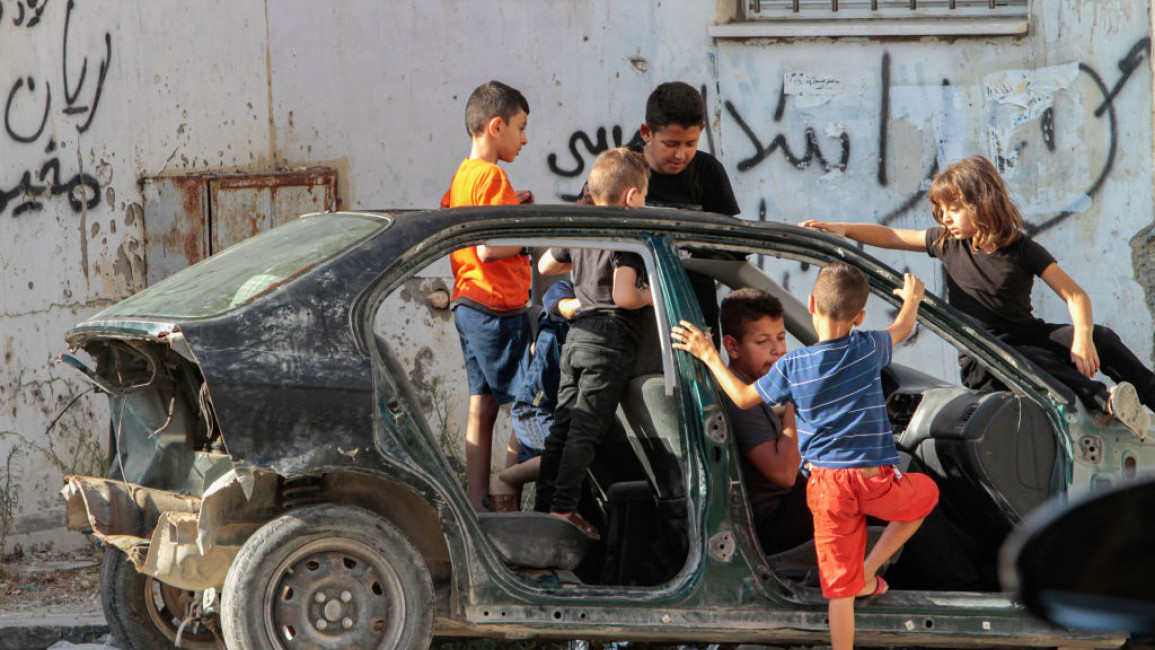
Palestinian youth killed are all presumed guilty by Israel
The evening of 25 January probably ended like any other for 17-year-old Abdullah Marwan Juma’a Mousa and 16-year-old Wasim Amjad Aref Abu Jaes. The two boys lived in the Jenin refugee camp in the northern West Bank, and like all Palestinians in the area, they were probably hyperaware of the escalating violence in recent months.
Last year was the deadliest year for Palestinians since 2005, with at least 146 killed, including 36 children. A full third of Palestinian youth murdered in 2022 were from Jenin, which means it was likely that Abdullah or Wasim knew at least one of them.
Unquestionably, the boys were familiar with the murder of Palestinian journalist Shireen Abu Akleh at the refugee camp in Jenin just last May. After all, it was one of the few cases where a Palestinian killed by Israeli forces received international attention.
''Every Palestinian young person today has grown up knowing nothing but a life of occupation, blockade, injustice, violence, restriction, and humiliation. They also know all too well that the international community is watching, occasionally with tears and condemnations, but taking no action.''
Indeed, the city of Jenin where the boys lived – found in part of the West Bank known as Area A, where the Palestinian Authority supposedly has full security control – has long been a primary target of Israel raids and violence that is regularly justified with blanket statements that it is a “terror hotbed”.
The boys, who may have ended their night socialising with family and friends, or catching up on schoolwork, had no idea what awaited them.
Tragically, by noon the next day, they were both killed.
Abdullah’s friends called for an ambulance after he was shot by an Israeli sniper, but Israeli forces initially prevented medical staff from entering the area. He was pronounced dead upon arrival to the hospital.
Wasim was also likely killed by a bullet, but according to Defense for Children International, he was run over by an Israeli military vehicle after being shot. He was left with such severe head wounds that medical personnel could not even tell that he’d been shot.
Just over a month into 2023, 41 Palestinians have already been killed, many of whom were children. Reports indicate that some children are even carrying goodbye letters in their pockets, anticipating their own untimely death.
Every Palestinian young person today has grown up knowing nothing but a life of occupation, blockade, injustice, violence, restriction, and humiliation. They also know all too well that the international community is watching, occasionally with tears and condemnations, but taking no action.
It is no life for anyone, let alone a child.
Like all Palestinians killed by Israeli forces—whether in the occupied territories or elsewhere, regardless of age, regardless of gender—the framing by Israel and its allies is that Palestinians are so inherently dangerous that deadly force is the only option.
Even after the brutal Jenin raid that was widely covered by international news outlets, many reports reinforced Israel’s narrative. Some articles immediately accepted that most of the dead were militants deserving of extrajudicial murder, and the US government’s press statement on the event referred to it as a “counterterrorism” operation. At the same time, the US and its allies have given Ukraine tens of billions of dollars in military aid to repel the Russian occupation, lauding the “ordinary people [who] are taking up arms and demonstrating striking bravery in the face of Russian aggression.”
This is all despite the Israeli government’s track record of obscuring how and why Palestinians are killed. In the case of the elderly woman, Majida Obaid, who was killed in the raid, Israel’s spokesperson only stated: “We do not yet know on whom to assign responsibility, who fired and where she was.”
Perhaps they will accuse Palestinians of killing Obaid as they did initially with Abu Akleh; perhaps they will chalk it up to “moral failure and poor decision-making” by Israeli soldiers, as they did with 78-year-old Omar Assad; perhaps they will deduce that the 61-year old woman was simply a victim of “unintentional fire aimed at armed gunmen,” as they did when the Israeli military killed 16-year-old Jana Zakarneh.
Israeli authorities may even eventually apologise, as they did when their police shot and killed Iyad Halak (although the officer who killed him was later promoted).
However, there are various variables, including age and gender, that play against the two young boys killed receiving any justice at all. Not to mention, they are not American citizens like some of the internationally highlighted cases of Palestinians killed.
Young Palestinian men like Abdullah and Wasim, who make up the vast majority of the Palestinians killed in 2022 and thus far in 2023, are highly unlikely to receive an investigation into those responsible. They will probably be classified as dangerous militants regardless of evidence that suggests otherwise. Any political affiliation they may have had or any words denouncing Israel that they may have posted online will all be used to justify their deaths, devoid of any context of the reality of their lives.
No evidence of actual crimes is likely to be provided; no apology will be given.
Israeli forces shot Wadea Abdulaziz Meri Abu Ramouz, 17, in Silwan, East Jerusalem on January 25 at 10pm. He sustained a gunshot wound below his heart. He was under arrest & guarded in the hospital, even in the ICU. He died at Shaare Zedek Medical Center at 11pm on January 27. pic.twitter.com/IGiwY1jfmA
— Defense for Children (@DCIPalestine) January 28, 2023
This trend—the classification of all young men as militants—is a tactic adopted by other states also. Famously, the US drone program in the early 2010s only reported a few civilian casualties initially because all men above the age of 16 in areas known to be inhabited by groups like Al Qaeda, were considered “military-age”. These victims were therefore regularly counted as combatants, allowing the US to maintain the façade of a just and effective counterterrorism strategy.
Indeed, there is something especially cynical in much of the international community continuing to accept the justifications of the Israeli military when it comes to violence perpetuated against Palestinians. Especially given the countless reports, videos, and other forms of evidence—many issued by individuals and groups amongst the international community—showing an increasingly militarised state that is run by politicians who proudly flout all edicts of international law.
The tragic deaths of Abdullah Marwan Juma’a Mousa, Wasim Amjad Aref Abu Jaes, and so many before them, highlights the injustice that Palestinian young people face, even in their deaths, and compounds and amplifies the layers of cruelty experienced by these children from the moment they are born.
Yara M. Asi, PhD, is an Assistant Professor of Global Health Management and Informatics at the University of Central Florida, a Visiting Scholar at the FXB Center for Health and Human Rights at Harvard University, and a US Fulbright Scholar to the West Bank.
Follow her on Twitter: @Yara_M_Asi
Have questions or comments? Email us at: editorial-english@newarab.com
Opinions expressed in this article remain those of the author and do not necessarily represent those of The New Arab, its editorial board or staff.


![Minnesota Tim Walz is working to court Muslim voters. [Getty]](/sites/default/files/styles/image_684x385/public/2169747529.jpeg?h=a5f2f23a&itok=b63Wif2V)




